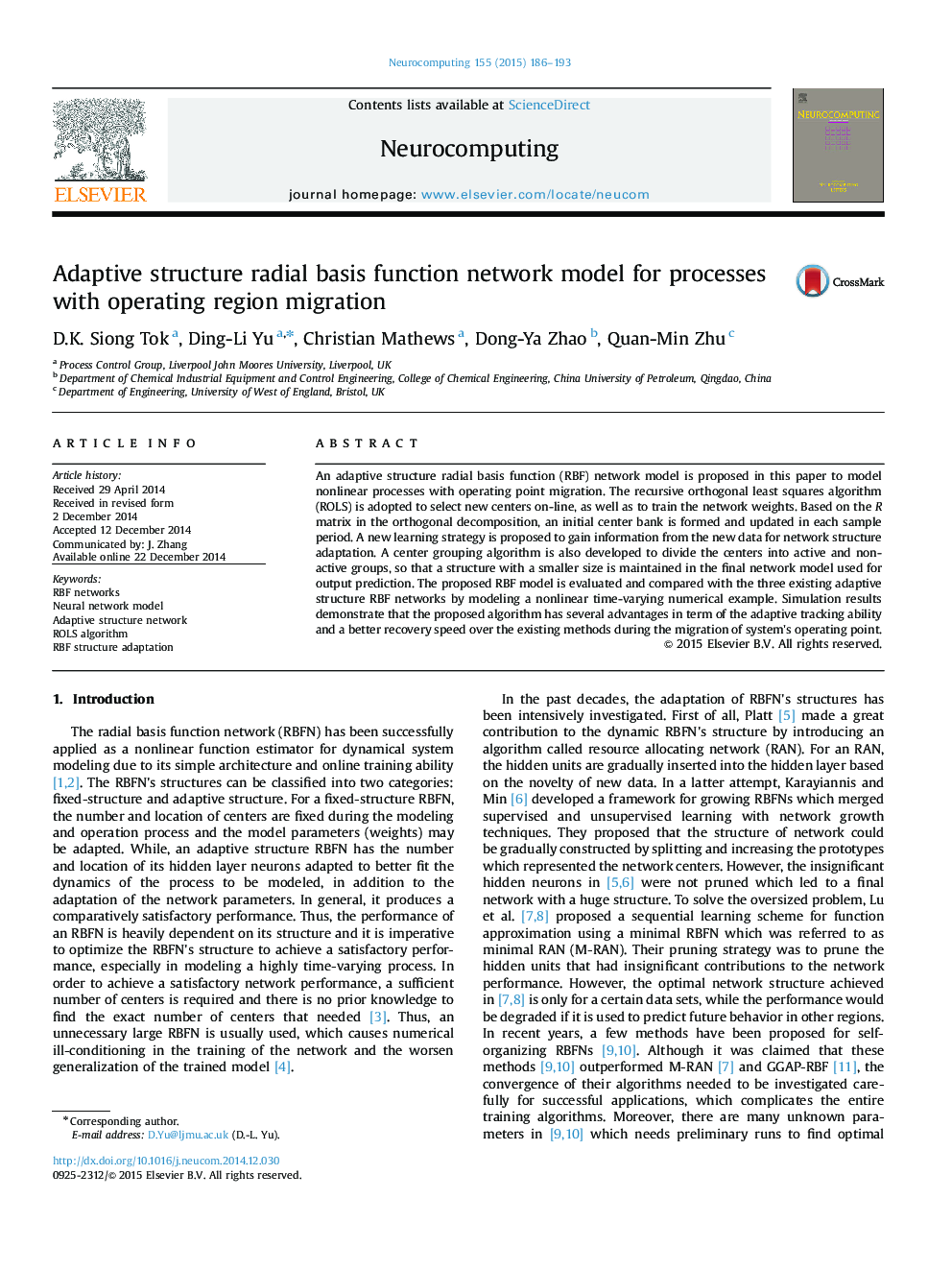| Article ID | Journal | Published Year | Pages | File Type |
|---|---|---|---|---|
| 6865983 | Neurocomputing | 2015 | 8 Pages |
Abstract
An adaptive structure radial basis function (RBF) network model is proposed in this paper to model nonlinear processes with operating point migration. The recursive orthogonal least squares algorithm (ROLS) is adopted to select new centers on-line, as well as to train the network weights. Based on the R matrix in the orthogonal decomposition, an initial center bank is formed and updated in each sample period. A new learning strategy is proposed to gain information from the new data for network structure adaptation. A center grouping algorithm is also developed to divide the centers into active and non-active groups, so that a structure with a smaller size is maintained in the final network model used for output prediction. The proposed RBF model is evaluated and compared with the three existing adaptive structure RBF networks by modeling a nonlinear time-varying numerical example. Simulation results demonstrate that the proposed algorithm has several advantages in term of the adaptive tracking ability and a better recovery speed over the existing methods during the migration of system׳s operating point.
Keywords
Related Topics
Physical Sciences and Engineering
Computer Science
Artificial Intelligence
Authors
D.K. Siong Tok, Ding-Li Yu, Christian Mathews, Dong-Ya Zhao, Quan-Min Zhu,
